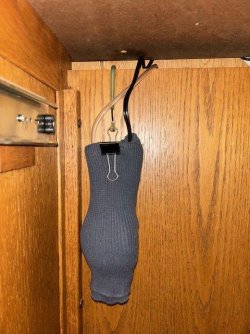Country joe
Fishaholic
I saw on line a tank had emptied through an air pump, I thought the non return valve would have prevented this happening.
Don’t miss out on the best deals of the season! Shop now 🎁
I never tried the black silicone ones but the pale and clear also becomes hard an very ugly with time.I’ve tried several… the old fashioned vinyl seems to work good, stays on fittings well, but does seem to get hard over time… not an issue if you aren’t intending on making changes all the time…

The instructions with my pump said not to put it directly over the tank, just higher than the tank. I think that was in case clumsy people like me managed to knock the pump into the tank......best to have the pump above the tank.
Higher than the tank is obviously better, but your plan requires two things to fail for a problem to occur, so probably good enough. I mean a side panel could blow out of a tank too. Some small amount of risk is going to remain for water spillage. I think I am going to try two check valves soon.If you have the pump below the aquarium put the check valve at the point where the hose leaves the aquarium, likely the highest spot. That way if you blow the junction between at the valve the hose to the pump falls to the floor and the hose to the aquarium falls into the tank.
Speaking of the hoses my experiences are that the vinyl holds up well and tends to not fall off the connections, black silicone does ok but doesn't hold as well as vinyl. I have thrown away all my clear silicone hoses because I cannot get them to stay on the connections.
Putting the pump below the tank is a risk but my tanks are sort of decoration and I don't want a bunch of equipment mounted on the wall above the tank.
